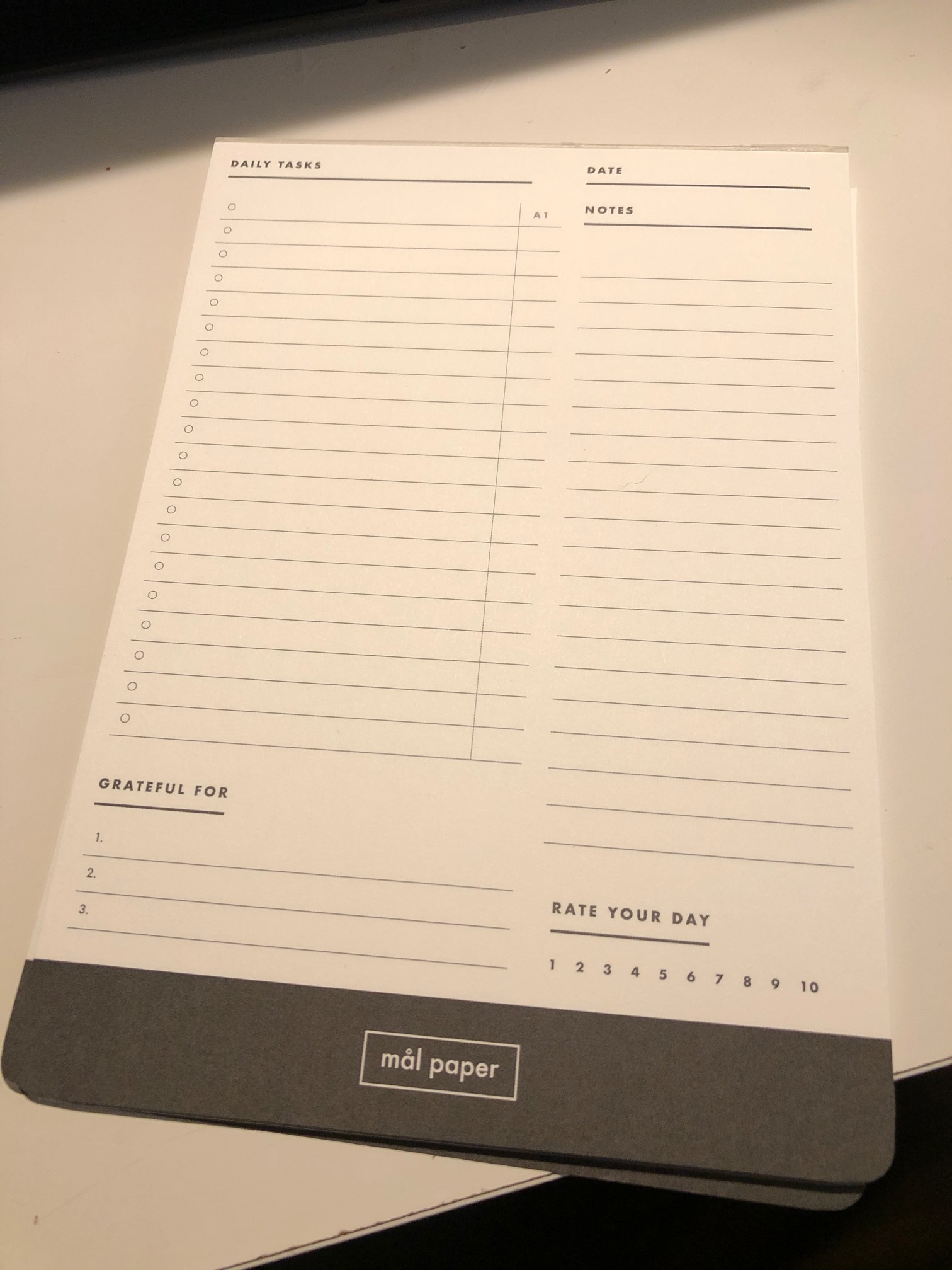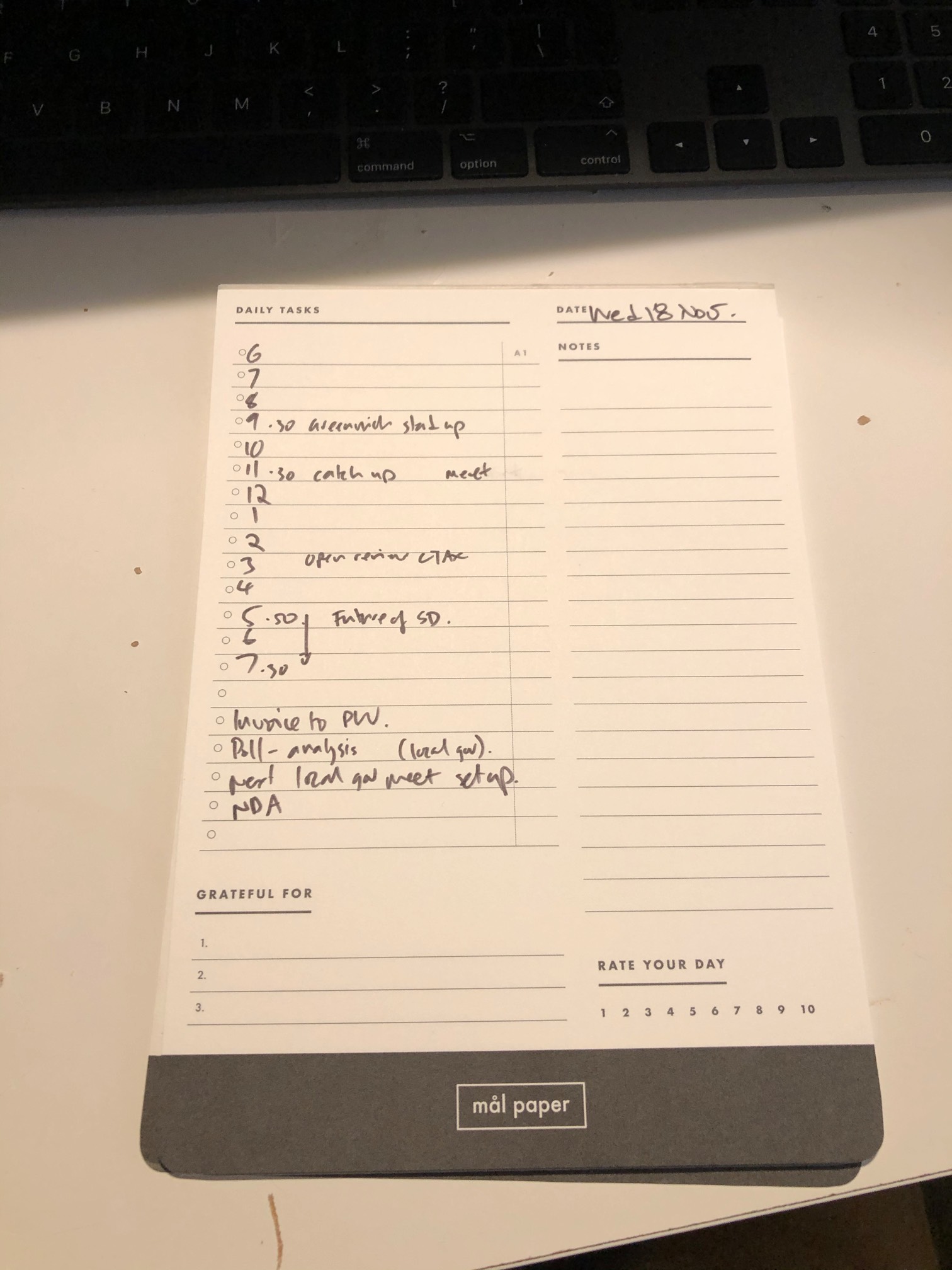Here’s a method I have used for the last 15 years to help me get on with my working day.
I do this out of habit at the start of the working day. I have had roles in the past where things can change overnight so I found too much planning the night before could be wasted.
I currently have the 4 calendars I am a member of, viewable simultaneously through the calendar app on my MacBook. I open that for reference. Every session with other people can be found in one of those calendars.
I write out the working hours of the day on a piece of paper, one hour per day, from whenever I start down to whenever I plan to end. I used to do this on a fresh page in my notebook, with the day and date at the top of the page.

I take a lot of notes through my days: This planning page can easily disappear from sight as I write notes as the day progresses I am currently experimenting with a separate sheet from a Mål Paper Daily Tasks Planner Pad that I have on my desk or hung above my desk. You can download a template to use at home. Or just write it out on another piece of paper like I did until a few months ago.

I write out my calendar. Things that plan to take an hour or the best part of an hour take up the full line. Half an hour (or thereof), half the line. This gives me the chance to recognise the outcome of every session I am due to do, and check if there is anything I still need to do beforehand. In the absence of rooms in physical workplaces at the moment I usually write how the meeting will be held online too. Knowing how much you’re jumping between Google Meet, Whereby, Zoom, Slack and Teams calls sometimes helps.
I have found this exercise helps me acclimatise to the planned day ahead.
I then write a list of things I could do that day, in some sort of order by importance. This usually means referring to the previous day’s list. The order first time isn’t that vital. When written out the list is reviewed, and I sometimes number the items to help me prioritise. What really needs doing today? This stuff needs to fit in around the other stuff. Does any of it need doing before sessions already planned? What could wait until tomorrow? I write some into my hour by hour plan but most things are fluid. The key here: Knowing what I can do that day and what I cannot.
I also try to mark in a gap where I can have a break for 5 or 10 minutes mid-morning and mid-afternoon. When I work remotely, like now, those natural short breaks like when you walk from a desk to a meeting room are gone. I try to get several of these in a day so I get up and stretch my legs, and not just at the middle of the day. It’s more than OK to look after yourself too as part of your plan.
I leave at least two hours blank, for the unplanned. Regardless of your role plan for the unexpected. When you plan rigidly you will always be breaking it up. Tightly packed days leave me with a sense of inevitable disruption — and at worse a sense of duty to work extra hours to make up for the changes. My “to do pile” helps with this.
At the end of the day I look in my calendar briefly, at the next day, so I know what time my first planned session is. I make some notes on my day planner of things to be mindful of the next day. I shut down.
This exercise takes me 5 minutes every day. I always feel better after doing it.
With thanks to Harry Bailey for spotting a typo in the original publication.
This post tagged with:
planning,
organising